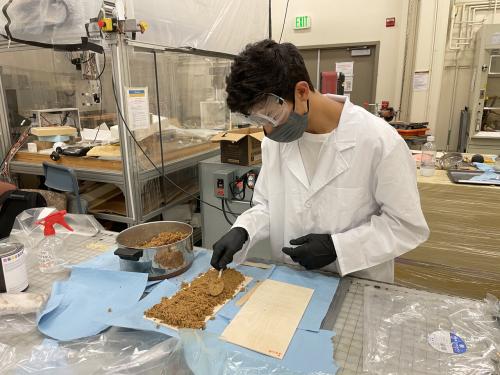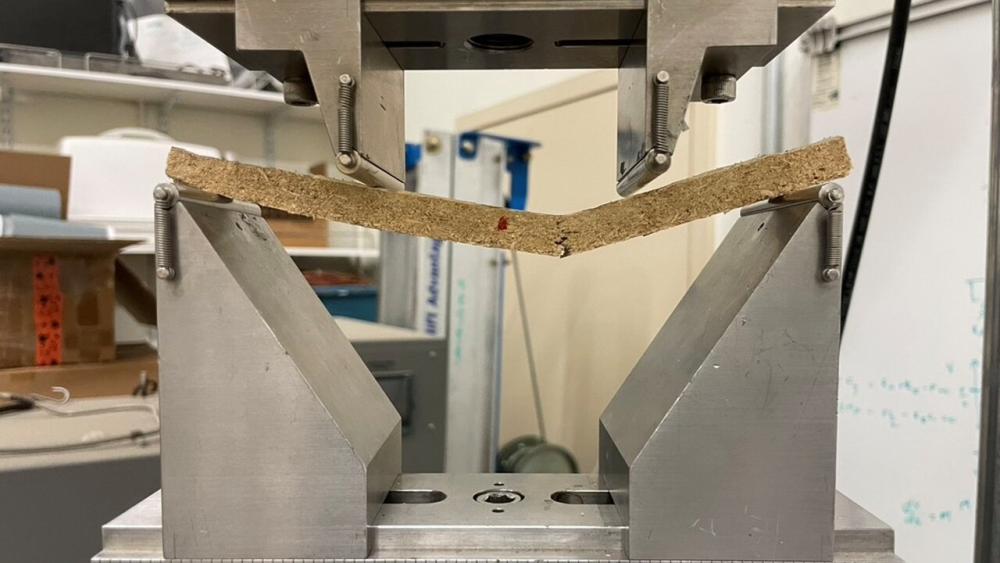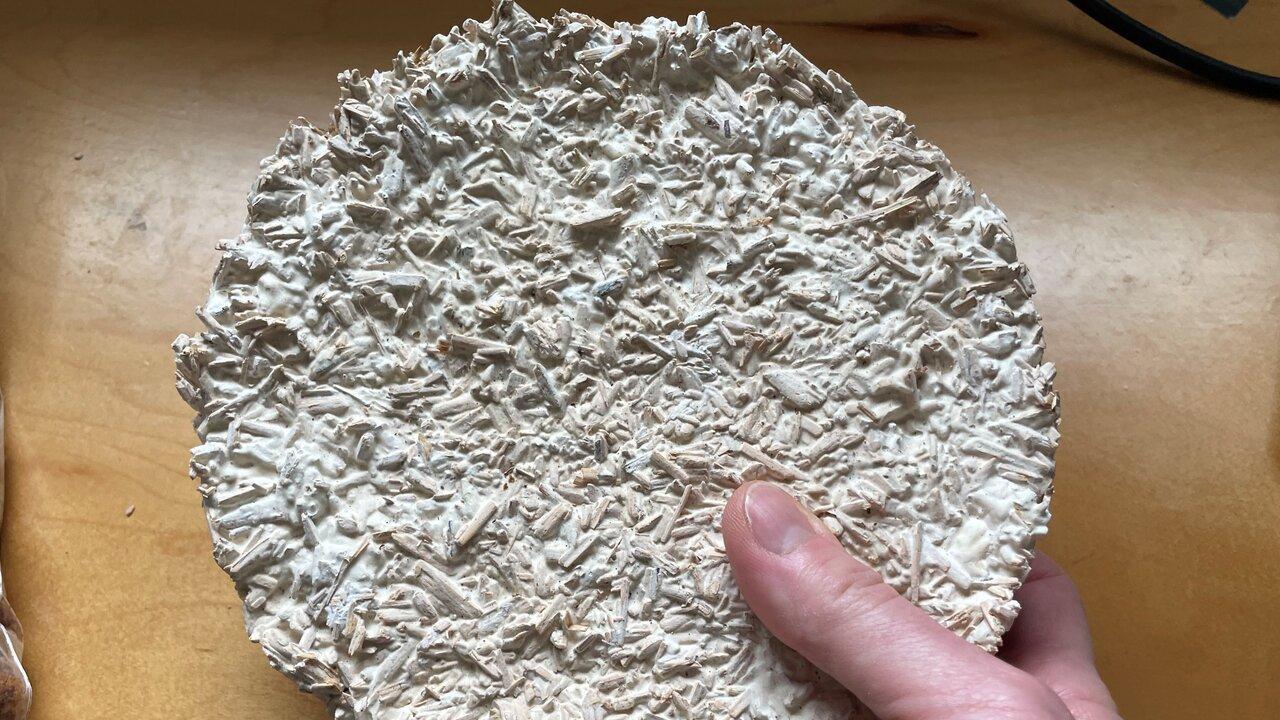UC Davis researchers studying mycelium, the white filament-like root structure of mushrooms, are making strides towards creating a more sustainable planet. Researchers found that by growing mycelium with a biomass, such as coffee grounds or left-over agricultural waste, they can create sustainable structures that can be turned into everything from biodegradable plastics and circuit boards to filters that remove harmful antibiotic and pesticide residues from water.
The UC Davis researchers leading the project, funded by the Green Initiative Fund at UC Davis, are Professors Valeria La Saponara (Mechanical and Aerospace Engineering), Nitin Nitin (Biological and Agricultural Engineering and Food Science and Technology), Ameer Taha (Food Science and Technology) and Katia Vega (Design).
How mycelium is grown and manufactured
All mycelium structures start with a biomass and dried mycelium that requires water, nutrients, filtered air, the right temperature, humidity and light to grow. After 6-14 days, the compound is transferred to a mold, where it grows in ambient conditions and is baked to create the final structure.
Mycelium structures are heat-resistant, lightweight, hydrophobic and can be molded into different shapes. When finished, the structures have the toughness of plastic, making them a compelling green alternative to nondegradable materials like polyurethane and acrylic.
Since there are millions of types of biomass and millions of types of mycelia, La Saponara’s lab is experimenting with many different biomasses from farms and community gardens in the Sacramento region to find the best combination and process.

Mycelium’s work in creating a toxic-free planet
Mycelium is rich in biomolecules, which means it can work both as a filter and a bio-catalyst to remove harmful chemicals from the environment. Mycelium could be a low-cost option to filter and metabolize antibiotic and pesticide residues from wastewater treatment or irrigation.
The research groups led by Professors Nitin and Taha run bioanalysis to judge the effectiveness of the mycelia and biomass combination selected and grown in La Saponara’s lab, and make sure the new compounds are not toxic or harmful in other ways.

The future of mycelium
Mycelium’s potential in creating a sustainable world is promising. Eldy Lazaro Vazquez, a design MFA student at UC Davis, found that mycelium can embed and enclose electronics. Lazaro Vazquez built a variety of biodegradable electronic devices including lamps, a light-up necklace and a working circuit board.
Eventually, La Saponara wants to explore building compostable mycelium-based blades for wind turbines, which are currently landfilled. Mycelium’s potential seems endless.
This blog highlights and summarizes an original article by Noah A Pflueger-Peters. The original article can be found here.
